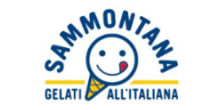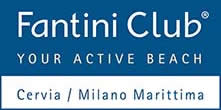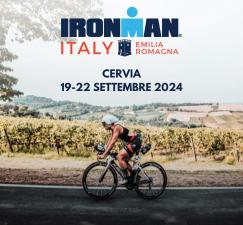
Cervia is surrounded by a rich and varied territory.
Ravenna
Ravenna is an important historical and cultural city of ancient origins. Over the course of the years, it was appointed capital of the Western Roman Empire, capital of the Kingdom of Theodoric King of the Ostrogoths and then capital of the Byzantine Empire of Europe.
The city’s numerous basilicas and baptisteries cherish the richest mosaic heritage dating back to the V and VI century. Eight monuments in Ravenna were included in the prestigious list of UNESCO World Heritage Sites.
The city’s museums are worthy of mention too. Not to be missed are MAR, the city’s Art Museum which gathers prestigious temporary collections and important permanent exhibitions; Ravenna’s National Museum, which gathers a dazzling array of different exhibits, such as precious Roman and Byzantine remains; The Archbishop Museum, which includes the Chapel of St. Andrea (UNESCO World Heritage Site); Dante Museum and the Museum of Risorgimento, the latter bearing witness to the glorious vicissitudes experienced by the supporters of both Garibaldi and Mazzini. Not to be missed are the important archaeological sites dating back to the Roman Age which punctuate the surrounding area.
Forlì
Forlì, the capital of the province of Forlì Cesena, was founded in the Roman Age. This peaceful town gathers prestigious cultural sites and thriving business centres, and it is famous all over Italy for its high standard of living. The city’s archaeological sites, museums, theatres and monuments bear witness to the glorious historical vicissitudes it experienced over the course of the years.
Predappio, the native town of Benito Mussolini, is situated 15 kilometres far from Forlì. When Mussolini was appointed Prime Minister and then Duce, Forlì was dubbed “the city of Duce” and became famous all over the world. For this reason, during the years of Fascism, Forlì underwent substantial growth and economic development; the architects of the Regime projected new buildings according to the traditional canons of that age, such as the railway station, Palazzo delle Poste and Palazzo degli Uffici Statali - which rise in the central Piazza Saffi and along viale Benito Mussolini (the current Viale della Libertà) – and “L. Ridolfi” airport.
Forlimpopoli
Forlimpopoli has been settled since the Lower Paleolithic. The city is dominated by an impressive well-preserved XVI-century castle which is now the seat of the local authorities, the archaeological museum, a theatre and a multipurpose cultural centre which in turn hosts Forlimpopoli’s Music School.
The city often arranges amazing folk festivals and cultural events, such as Buonanotte Suonatori – the festival organized by the school of folk music, Festa Artesiana, the Festival Didjin'Oz, which is dedicated to the music and culture of Indigenous Australian, and many more.
Not to be missed is Casa Artusi, the first Culinary Art Museum in the world (Sportur Club Hotel is provided with special agreements with it). Casa Artusi is an important centre of gastronomic culture which is dedicated to traditional Italian cooking. Idyllically set just in the heart of the district of Chiesa dei Servi, a former monastery which develops in the centre of Forlimpopoli’s old town, its long history dates back to the Middle Ages.
San Marino
The Republic of San Marino, a small independent State of Southern Europe, dominates Rimini’s valleys from the top of Mount Titano. San Marino boasts ancient origins, since it is the second oldest republic in the world after the Roman one. For this reason both the old town and Mount Titano were included in the prestigious list of UNESCO World Heritage Sites. San Marino, which welcomes visitors with the utmost warmth and hospitality, boasts an inestimable heritage of outstanding architectures, interesting museums and important historical sites. Every year, it is the seat of important international cultural and sports events, and it is also the venue for a famous philatelic-numismatic rally.
Santarcangelo di Romagna
The central core of this small village of Rimini rises over the ancient tuff caves which were dug by the ancient Christians to escape persecution and were then used as both houses and places of worship. Over the course of the centuries, they have been used as cellars (because of their constant 12-13° temperature) and shelters. They are now easily accessible on foot from the old town. The capital of Rimini’s dialect poetry, it is home to important cultural traditions which are now known all over the world thanks to the great events which are often arranged in the village, such as the Festival of Teatro in Piazza and the ancient fairs of St. Michele and St. Martino. Walking down the picturesque streets of the old town, visitors will have the possibility to admire outstanding architectural masterpieces and important museums, such as the ethnographic museum and the museum of the button, which is subdivided into three sections.
Savignano sul Rubicone
Savignano sul Rubicone, a small village which dates back to 187 B.C., nestles on the top of the sweet hills which develop few kilometres far from the sea. It was the seat of numerous historical vicissitudes and was almost completely destroyed during World War II, when 90% of the citizens died and most architectural beauties were destructed.
Savignano’s most representative landmark is its bridge. We don’t know the exact date of its construction: some historians call it "consular", other think it may date back to the Age of Augustus. The impressive Ribano Hill is dominated by the local Castle, a fortified manor house which dates back to the Middle Ages, and also hosts the Municipal Palace (1700), the Pescheria Vecchia, magnificent villas and outstanding sacred buildings.
A short distance from Savignano’s city centre, a large shopping centre gathers glamorous shops and outlets which sell products belonging to the best brands.
Montefeltro
The south-eastern area is occupied by the lush Montefeltro landscapes, which are dotted with imposing hills and mountains and carpeted with thick woods and flourishing valleys. This lush environmental area also cherishes important historical and cultural sites, and is home to the famous Regional Natural Park of Sasso Simone e Simoncello. Ancient castles and fortresses, such as the imposing fortress of San Leo, make this territory even more mysterious and fascinating.



We absolutely loved this hotel! Beautiful and clean r


We hebben hier een week vakantie gevierd. Het hotel i


Nuestra estancia fue genial, buena habitación con vi


Hy, excellent experience at the hotel Sportur, clean



De medewerkers waren geweldig. Zeer behulpzaam en heb


Lovely, friendly and helpful receptionist. Good hotel

RICHIEDI INFORMAZIONI
Sportur Club Hotel Lungomare G. Deledda 66 - 48015 Cervia (Ra) - Tel. +39 0544 975039 -
 +39 370 3708801 - Fax +39 0544 917034
+39 370 3708801 - Fax +39 0544 917034info@sporturclubhotel.com
Privacy & Cookie Policy - Cookie preferences - P.Iva 02279330399 - CIR: 039007-AL-00183 | CIN: IT039007A1XVMYYEYH




























i dont understand, but all in sportur hotel was great